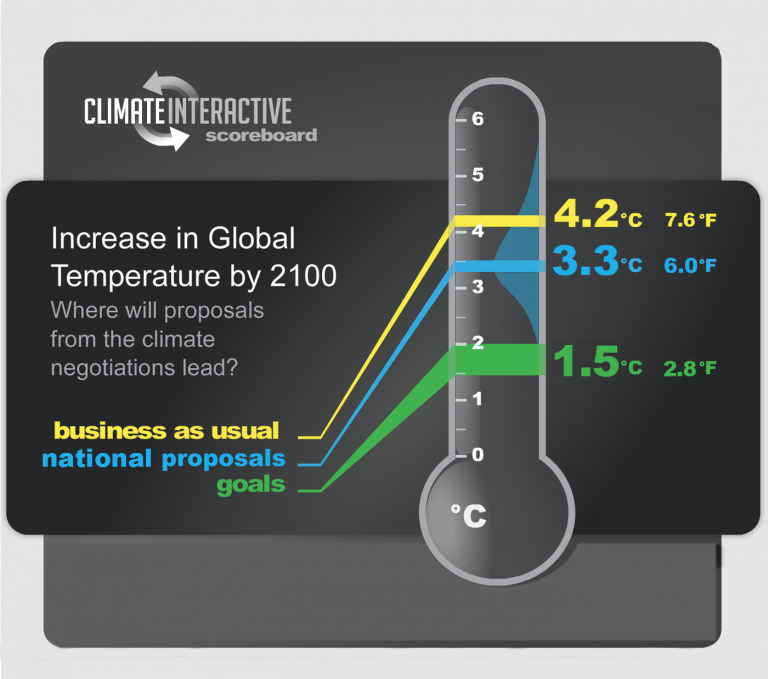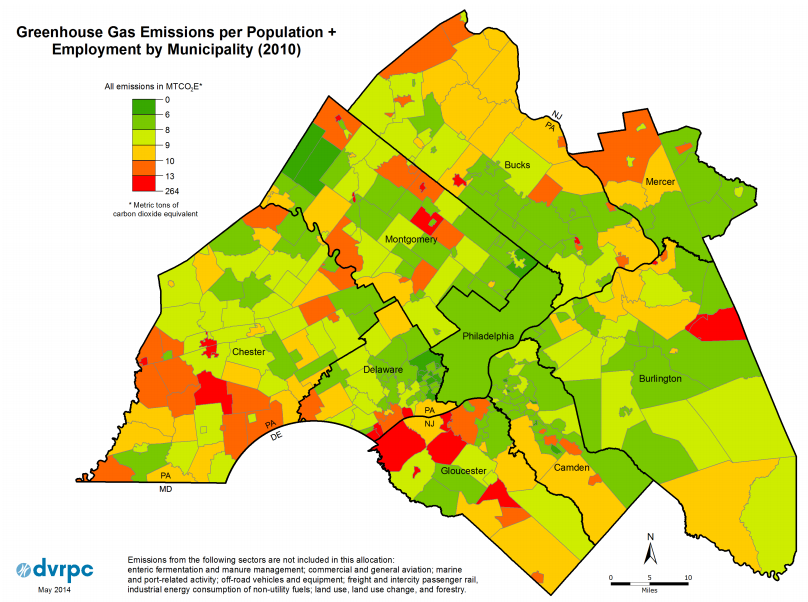Understanding the Paris Agreement
Under the United Nations Framework Convention on Climate Change, the international community agreed to:
- To limit warming to 2 degrees C and aspire to 1.5 degrees C as the guardrail against catastrophic changes
- To negotiate a new treaty with legal effect that includes all nations to go into effect by 2020.
- To ramp up the national GHG emission reduction commitments under the UNFCCC based upon equity.
Can it be done?
This page offers resources on the rationale behind setting specific targets and strategies to reach carbon neutrality by 2050.
Targets
Philadelphia Regional goals set in 2013
We are fortunate in the Philadelphia area to be part of the The Delaware Valley Regional Planning Commission (DVRPC). This is an organization dedicated to uniting the region's elected officials, planning professionals and the public with a common vision. They serve nine Philadelphia area counties: Bucks, Chester, Delaware, Montgomery and Philadelphia in Pennsylvania; and Burlington, Camden, Gloucester and Mercer in New Jersey. DVRPC is the federally designated Metropolitan Planning Organization for the Greater Philadelphia Region.
In 2013, they issued their Connections 2040 Plan for the Greater Philadelphia Area. Here’s what our energy profile looked like then:
Here are DVRPC’s Goals for Reducing Greenhouse Gas Emissions in 2013
The severe weather events and changes to our climate due to global warming pose threats to both the environment and the economy. Global Warming is largely due to rising levels of greenhouse gases (GHGs) in the atmosphere. DVRPC’s Regional Greenhouse Gas Emissions and Energy Use Inventory estimates that in 2010,the region produced 81.6 million metric tons CO2 equivalent of GHGs. This was roughly 1.2 percent of theU.S. total GHG emissions, about the same as the countries of Portugal and Austria, both of which have populations about two times that of the DVRPC region. The latest science indicates that a reduction in global GHG emissions to 80 percent below 1990 levels is required by 2050 to keep global climate change within an acceptable range. A 60 percent reduction from 2005 GHG emissions levels by 2040 would be required to have the region on track to reach the goal of 80 percent reduction by 2050. Achieving this goal will require significant coordinated action at the household, firm,community, regional, state, national, and global level.
Reduced burning of fossil fuels means cleaner air and lower emissions of the greenhouse gas emissions that lead to global warming. Maintaining and enhancing forests and soils that sequester (store) carbon is also important. For example, the trees located in the Hopewell Big Woods, a 73,000 acre mostly intact forestland on the border of Chester and Berks counties, store carbon valued at approximately $18 million. (Source: Return on Environment, 2010).
Future land and housing development patterns in the region over the coming decades will also have a significant role in shaping future energy use and GHG emissions. As the GHG emissions map illustrates, those municipalities with walkable, mixed-use neighborhoods; near transit infrastructure; and with smaller houses, use less energy and produce fewer GHG emissions per person. DVRPC’s transportation and land use planning policies, priorities, and projects are all aligned to advance these goals.
Where do you live? What’s the energy use there?
You can learn more about what your community uses and begin thinking about what strategies would best move you to carbon neutrality.
-
DVRPC Energy and Emissions Interactive Map - by Township
More local stuff
Summary of RE solutions: short, long (8 pages), really long
Solar Ordinances in Eastern Chester County (.pdf)
National Reports
Mark Z. Jacobson, a professor of civil and environmental engineering at Stanford, and colleagues, including U.C. Berkeley researcher Mark Delucchi, are the first to outline how each of the 50 states can achieve such a transition by 2050 http://web.stanford.edu/group/efmh/jacobson/Articles/I/USStatesWWS.pdf
International Reports
Latest IPCC Reports:
- Sep 2022 - AR6 Synthesis Report - summarizes the following working group and special reports:
- 2022: Impacts, Adaptation and Vulnerability;
- 2022: Mitigation of Climate Change;
- 2021: Physical Science Basis;
- 2019: Climate Change and the Land;
- 2019: The Ocean and Cryosphere in a Changing Climate.
- 2018: Global Warming of 1.5°C;
European Commission: https://ec.europa.eu/clima/policies/strategies/2050_en
100% Energy for All: Energy [R]evolution: A Sustainable World Energy Outlook 2015 by Greenpeace and the German Aerospace Centrehttp://www.greenpeace.org/international/Global/international/publications/climate/2015/Energy-Revolution-2015-Summary.pdf
Europe and North Africa could obtain all of their electricity from renewable energy by 2050, if the concept is supported by a single European power market united with a similar market in North Africa.
A transformation of the power sector based on 100% renewable energy would address energy security and supply concerns, while decarbonising electricity generation and, at the same time, contributing to a substantial reduction in energy poverty, concludes ‘100% Renewable Electricity - A roadmap to 2050 for Europe and North Africa.’
Sweden is aiming to neutralise its greenhouse gas emissions by 2045. http://www.climatechangenews.com/2016/02/11/sweden-to-go-carbon-neutral-by-2045/